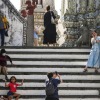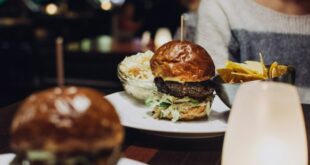French auction house Millon will auction off the imperial seal “Hoang De Chi Bao” of Nguyen Dynasty’s King Minh Mang later this month for 2-3 million euros ($1.96-2.95 million).
The imperial seal of Emperor Minh Mang (1791-1841) will be put up for auction along with 329 artifacts during a sale on Oct. 31 (Paris time).
According to the French auction house, the square-based seal is 10.4 centimeters tall and weighs 10.78 kilograms.
The handle is in the form of a coiled dragon with five claws and the head is raised and the character “Vuong”, meaning king, is incised on its forehead.
Each of the dragon’s four legs has five claws. Its scaly body is adorned with a bulging dorsal ridge, and the head is covered with stag horns, exposing the lion’s muzzle and teeth.
 |
|
The imperial seal of King Minh Mang. Photo courtesy of Millon |
On either side of the dragon, two inscriptions engraved in Chinese characters: “Minh Mang Tu Nien Nhi Nguyet So Tu Nhat Cat Thoi Chu Tao” (Made on an auspicious day, Feb. 4 of the 4th year of the reign of Emperor Minh Mang equivalent to Feb. 4, 1823 of the Vietnamese lunisolar calendar) and “Thap Thanh Hoang Kim, Trong Nhi Bach Bat Thap Lang, Cuu Tien Nhi Phan” (Pure gold for a weight of 280 taels, nine candares. Equivalent to a total weight of 10.7 kilograms).
The phrase “Hoang De Chi Bao” (Treasure of The Emperor) appears on the imperial seal.
The auction house claims this seal was used exclusively for important documents under Nguyen Dynasty rule.
More than a hundred seals were created during the 143 years of the Dynasty. Models were made in gold, jade, ivory, silver and bronze and used by the various members of the royal family according to their rank, as well as officials. Fifteen jade and gold seals were created during the reign of King Minh Mang.
Authorities and specialists at home are demanding the artifacts be returned to Vietnam.
A spokesperson for the Department of Cultural Heritage stated that upon learning the news, it had recommended the quick verification of a number of details regarding the item, including the previous owner, legality, expected selling price, and the ability to negotiate direct purchase without auction.
Following verification, the Vietnamese delegation will recommend a course of action for safely returning the item to Vietnam.
The ministry’s Department of Cultural Heritage said that if the seal was the real “Treasure of The Emperor”, then it had been used for public and political activities throughout a historical period and carried significant cultural value.
Nguyen Phuong Hoa, director of the International Cooperation Department under the culture ministry, said the agency is currently checking to see if the artifact is real or not.
“To depend solely on the auction house’s information would be a mistake. We need the assistance of the Vietnamese embassy in France before we can move further,” she said.
According to antiquities expert Tran Duc Anh Son, he had heard about the seal’s auction through a friend. Through research and comparison with historical documents, he was able to verify the authenticity of the artifact described in Millon’s description and said he strongly believes it is the real seal.
He had later told Nguyen Van Doan, director of Vietnam’s National Museum of History, to figure out a method to bring the artifact home. The museum officials have since met with officials from the federal agency responsible for cultural preservation to discuss the issue.
“The Nguyen Dynasty placed a high value on the seal, thus its return to Vietnam would be greatly appreciated,” he said.
 |
|
A golden bowl from of Nguyen Dynasty’s King Khai Dinh. Photo courtesy of Millon |
Millon also offers for sale a golden bowl, which has an image of a dragon, from the time of the Nguyen Dynasty’s King Khai Dinh (reigning 1916-1925). The bowl is estimated to fetch between 20,000-25,000 euros.
There has been a rise in the popularity and presence of Vietnamese antiquities in international auctions.
In June, a jade bowl owned by Tu Duc, the fourth king of Vietnam’s last royal dynasty, went under the hammer for 845,000 euros at an auction in Paris.
In October last year, a Vietnamese Mandarin cap from the Nguyen Dynasty sold for 600,000 euros in Spain.
Founded in 1928, the Paris-based Millon Auction House also has offices in Nice (France), Brussels, and many other European cities.
- Reduce Hair Loss with PURA D’OR Gold Label Shampoo
- Castor Oil Has Made a “Huge” Difference With Hair and Brow Growth
- Excessive hair loss in men: Signs of illness that cannot be subjective
- Dịch Vụ SEO Website ở Los Angeles, CA: đưa trang web doanh nghiệp bạn lên top Google
- Nails Salon Sierra Madre
 VnExpress News The News Gateway of Vietnam
VnExpress News The News Gateway of Vietnam





